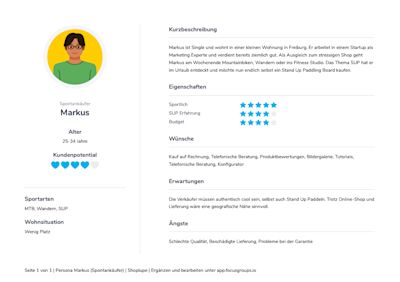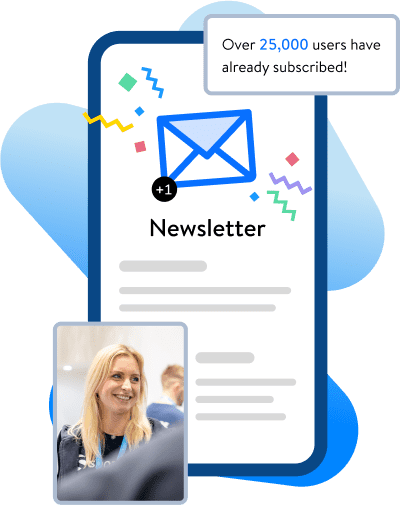
In our Customer Happiness Circle blog series, Johannes Altmann from Shoplupe provides valuable tips on customer focus and customer satisfaction. This time, we’re talking touchpoints. How do your customers interact with your brand? And which of those touchpoints could you improve?
You’ve probably been advised at some point to “do a touchpoint analysis”. It may sound like a huge amount of work – highly theoretical and perhaps even pointless work. The upshot: You haven’t gotten around to it yet.
But it’s worth noting that the approach and the results are actually pretty good – you just might not have associated them with the term “touchpoint analysis”.
I recently came across a particularly fun “thank you” page and thought, “That’s an amazing idea!”. I don’t necessarily mean the wording itself, but the idea that you can be creative even with a very standard page like that. It’s not a page that’s typically on the radar for optimization... and this is the whole aim of touchpoint analysis: To bring pages and elements onto your radar!
So in this Customer Happiness Circle blog post, I’ll be providing a few insights on the subject of touchpoints. Discover how easy it can be to turn theory into a great result that makes your customers happy!
Preparing for touchpoint analysis
A touchpoint analysis is a method of recording all of the interactions a customer has with your store. The aim is to improve the customer experience in order to maximize customer satisfaction. A touchpoint can be any element that the customer sees or interacts with in your store – these are the on-site touchpoints. But your store has other, tangential touchpoints, from your social media presence to the call center, billing, delivery, and returns forms.

The marketing service provider Bloomreach recently stated in an analysis that the number of touchpoints is growing by 20% every year. Once you begin to look at the touchpoints outside your online store, it becomes more difficult to pin down the relevant details. We discuss customer journeys in online focus groups at focusgroups.io in order to get a better idea of how customers approach the decision to buy and the purchase itself. These findings are important, as they provide a better understanding of customers and enable them to enjoy a free-flowing shopping process in your store. The information can be used to create customized landing pages or, at least, to tailor elements of those pages to the customer’s journey.
If, for example, the analysis shows that the majority of customers are looking for a mattress because they have back pain, the landing page should specifically reference this. New customers will be delighted to see that the store clearly recognizes their issue.
To optimize your own store, then, you need
customer insights that allow you to understand the external customer journey
and store analyses that help you understand the store internally.
Customer surveys, interviews, and focus groups are ideal for providing the external understanding you need. To analyze the store itself, all you need are heat maps or data from analytics tools.
The customer journey map
A customer journey map is a visual tool that maps out the customer’s journey from start to finish. As with the personas model, this visual representation helps us to understand the customers’ needs and wishes and provides insight into the expectations and challenges involved. The map typically indicates the different touchpoints the customer passes through in the process of fulfilling a need and arranges them in different phases.
In my projects, we work with five phases:
Awareness
Consideration
Purchase
Service
Loyalty
I have come across maps that were so complicated that it was practically impossible to work with them. Too much information defeats the point of an overview. So I tend to collect several touchpoints into each phase and gather as much information as possible about each. At the outset, I don’t really care where in the customer journey the touchpoint appears. In the overview, I’m also not interested in the device the customer is using to interact with the touchpoint (mobile, desktop, tablet) – this is simply too much information.
Touchpoints and personas
Touchpoints and personas are extremely closely linked. You want to know which types of customer each touchpoint is relevant to. It’s normal practice to document this information with the touchpoint or in the customer journey map. However, I tend not to do this, because I feel it makes things much more complex, hypothetical, and abstract. At the end of the day, it’s very unlikely that the online store will be able to link up all of the tools so that they can recognize a specific persona in the store and then output customized information at the touchpoint. All that I'm interested in here is an overall understanding.

German example of a persona sheet, source: https://www.personas.de/downloads/focusgroups_persona_beispiel.pdf
Groundwork and optimization
Tackling the subject of touchpoints involves a lot of work. As always, the focus is on presence and on understanding your potential and active customers:
Which customers do I have in the store?
Which pages and information are they viewing and using?
And how important does that make those pages and that information?
From this, you can ascertain where new ideas and optimization are called for. This will ensure that you don’t forget the “thank you” page we mentioned earlier, for example – you will be able to come up with a good idea to customize it.
Touchpoints that are often neglected
The “no results” search page. Many stores simply display a blunt statement that the search found no results. This is pretty poor. After all, you have the potential to surprise the customer here – for example with a callback service.
The 404 page. This is one we examine in every store to check whether it really just says “This page doesn’t exist”. There are so many better ideas when it comes to the 404 page. Try searching Google for “best 404 pages”.
Filters on every product list. It goes without saying that you and your team will already have discussed which filter criteria are important. But the touchpoint can only be perfected if you establish the right sequence: Which criterion do customers use first?
The wishlist is often seriously neglected. The first difficulty is determining the point at which users want to add products to their wishlist and therefore require this feature. Is it when they select the product on the list page or shortly before they decide to make the purchase on the details page?
The customer account is generally completely overlooked as a touchpoint. But there are so many ways to wow the customer here. When was the last time you checked out a customer account in your store?
Conclusion
Touchpoint analysis can sound incredibly complex at first, but once you get to grips with it, it’s amazingly useful. Look at it as your checklist for the most relevant pages and content in your store. All you need do is draw up your checklist, analyze it, gather insights and facts, and introduce the required optimizations, step by step. For a more customer-centric store and happy customers!

All episodes at a glance
Episode 0 – Introduction: Customer Happiness expert Johannes Altmann explains why the subject is so important and outlines the building blocks you can use to inspire your customers.
Episode 1 – Usability: find out how usability errors come about, how you can avoid them, and what impact good usability has on your users’ enjoyment of your store.
Episode 2 – Experience: this episode reveals what impacts customers and offers you inspiration to conjure up an unforgettable shopping experience.
Episode 3 – Brand belonging and your online store: in this episode, you'll learn how to make your online store your customers' favorite and create brand belonging.
Episode 4 – Touchpoints: episode four is about touchpoints of your brand that your customers interact with.
Episode 5 – Cluster costumers: what types of systems exist, how can they benefit you, and how can you utilize customer clusters to accurately depict your customers and their needs?
Episode 6 – Continuity: discover how to organize your business to ensure 'We make the customer happy' isn't a fleeting goal, but rather a constant focus on your agenda.










